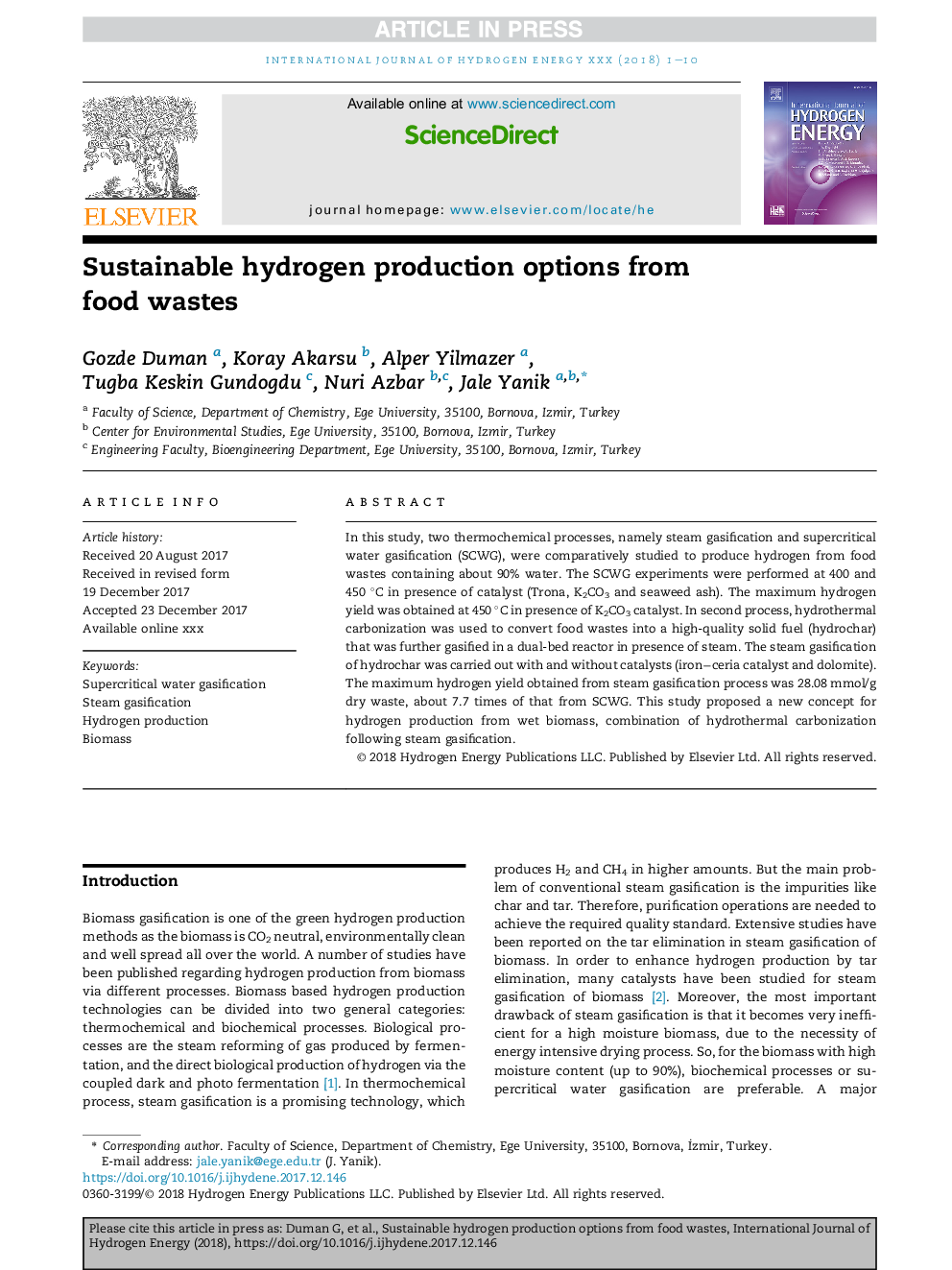| Article ID | Journal | Published Year | Pages | File Type |
|---|---|---|---|---|
| 7705836 | International Journal of Hydrogen Energy | 2018 | 10 Pages |
Abstract
In this study, two thermochemical processes, namely steam gasification and supercritical water gasification (SCWG), were comparatively studied to produce hydrogen from food wastes containing about 90% water. The SCWG experiments were performed at 400 and 450 °C in presence of catalyst (Trona, K2CO3 and seaweed ash). The maximum hydrogen yield was obtained at 450 °C in presence of K2CO3 catalyst. In second process, hydrothermal carbonization was used to convert food wastes into a high-quality solid fuel (hydrochar) that was further gasified in a dual-bed reactor in presence of steam. The steam gasification of hydrochar was carried out with and without catalysts (ironâceria catalyst and dolomite). The maximum hydrogen yield obtained from steam gasification process was 28.08 mmol/g dry waste, about 7.7 times of that from SCWG. This study proposed a new concept for hydrogen production from wet biomass, combination of hydrothermal carbonization following steam gasification.
Related Topics
Physical Sciences and Engineering
Chemistry
Electrochemistry
Authors
Gozde Duman, Koray Akarsu, Alper Yilmazer, Tugba Keskin Gundogdu, Nuri Azbar, Jale Yanik,
